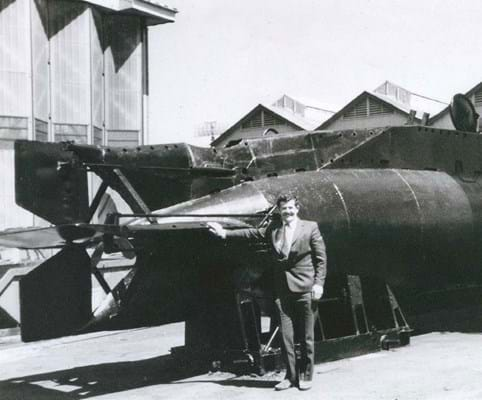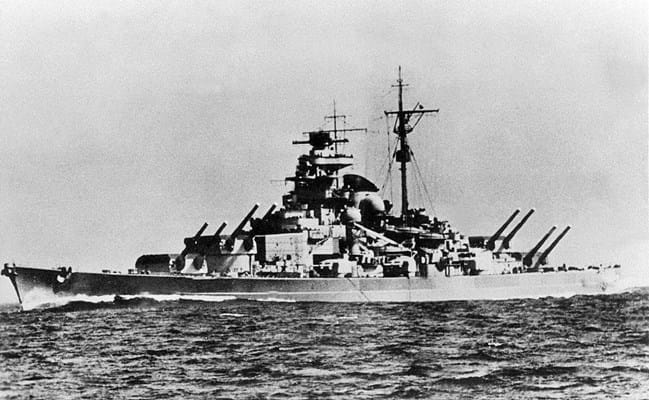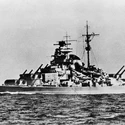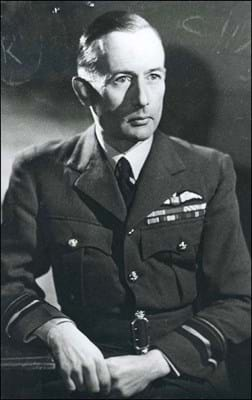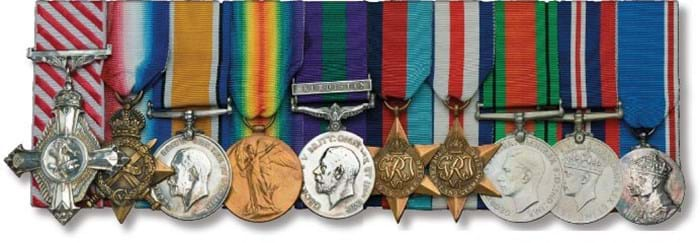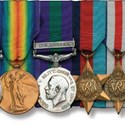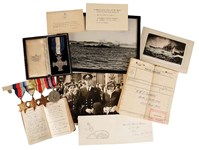‘Sink the Bismarck!’ is a familiar cry thanks to a 1960 film of the same name. However, it is sometimes forgotten that the huge German vessel had a sister ship which the British were also determined to destroy.
The Tirpitz was the second of the two Bismarck-class battleships laid down in the 1930s which were the largest ever constructed by Germany. They formed a major challenge to the Royal Navy and the particularly the supply convoys which kept Britain and the Soviets in the fight. Eliminating them became a priority.
If the story of the sinking of the Bismarck in 1941 is well known, the fate of the Tirpitz is less familiar.
The sale of a medal group at London auction house Dix Noonan Webb (20% buyer’s premium) for £70,000 on February 27-28 helps to shed some light on its demise and the heroics of Edmund ‘Eddie’ Goddard in particular.
Fjord attack
While the Bismarck was finally finished off by aircraft and surface ships on the open seas, the Tirpitz posed a bigger problem because it lay anchored in Nazi-occupied Norway. A way had to be found to attack her.
After human torpedoes failed, the four-man midget submarine or X-craft was tried. At 50ft in length, it was small enough to penetrate the fjord defences and yet large enough to operate unsupported for several days and carry a four-ton charge. Six craft attacked on September 22, 1943 with Goddard helmsman of the midget submarine X6.
His sub managed to lay charges, which were to cause serious damage, but with a defective periscope there was little possibility of reaching the open sea. Captain Donald Cameron gave the order to scuttle and give themselves up. Under a hail of small arms fire, Goddard threw open the hatch and, followed by crewmates, stepped aboard a German launch into captivity. The six X-craft survivors were treated well and Goddard escaped to safety in March 1945.
Of the other submarines involved, X7 also laid charges but two of the crew were killed and the other two captured. X5 was thought to have been sunk by gunfire and depth charges, all of her crew being killed.
‘One of the rarest gallantry awards’
Cameron was awarded the Victoria Cross for the X6 attack as was Lt Basil Place, commander of X7, while Goddard received the Conspicuous Gallantry Medal (CGM). It was the only CGM awarded for the attack on the Tirpitz, and one of only two ever awarded for X-craft.
“The CGM was sold by the recipient at Sotheby’s in October 1983 and [was] being sold by a collector who has had it for many years,” said Nimrod Dix of DNW.
“The Naval CGM is one of the very rarest gallantry awards. Instituted in 1855, only 247 were ever awarded, the last one being for service in the Gulf in 1990.”
Finishing the job
With the Tirpitz damaged but still a threat, the Allies turned to airpower as she anchored in Tromsö fjord. Lancaster bomber squadrons 9 and 617, carrying 12,000lb bombs were joined by Soviet aircraft on November 12, 1944.
Operating in clear skies, the Lancasters finally sunk the mighty battleship, which capsized after the port side was blown open. More than 1200 crew members died.
Another medal group sold by DNW on February 27-28 was earned by a man who played a key role in the attack: Air Chief Marshal The Honourable Sir Ralph Cochrane. ‘Cocky’, as he was known, had worked with Barnes Wallis on aircraft innovation during the First World War and with the outbreak of the second a string of important appointments followed.
Just two days after being installed as Air Officer Commanding No 5 Group, Cochrane was tasked by ‘Bomber’ Harris with the planning of Operation Chastise. His achievements included the recruitment of Guy Gibson, the painstaking formation of ‘X’ or 617 Squadron as a specialist precision bombing unit, and the planning of the legendary Dambusters raid itself.
For the remainder of the war Cochrane worked closely with both Barnes Wallis, Leonard Cheshire and Willie Tait, helping to develop special target marking techniques, and incorporating the huge ground penetrating bombs ‘Tallboy’ and ‘Grand Slam’ into 617 Squadron’s armory.
Together, Tait and Cochrane masterminded the eventual sinking of the Tirpitz.
His career awards, an Great War ‘Airships’ Air Force Cross group of 10, were won by a phone bidder at £17,000, just over double top estimate.


